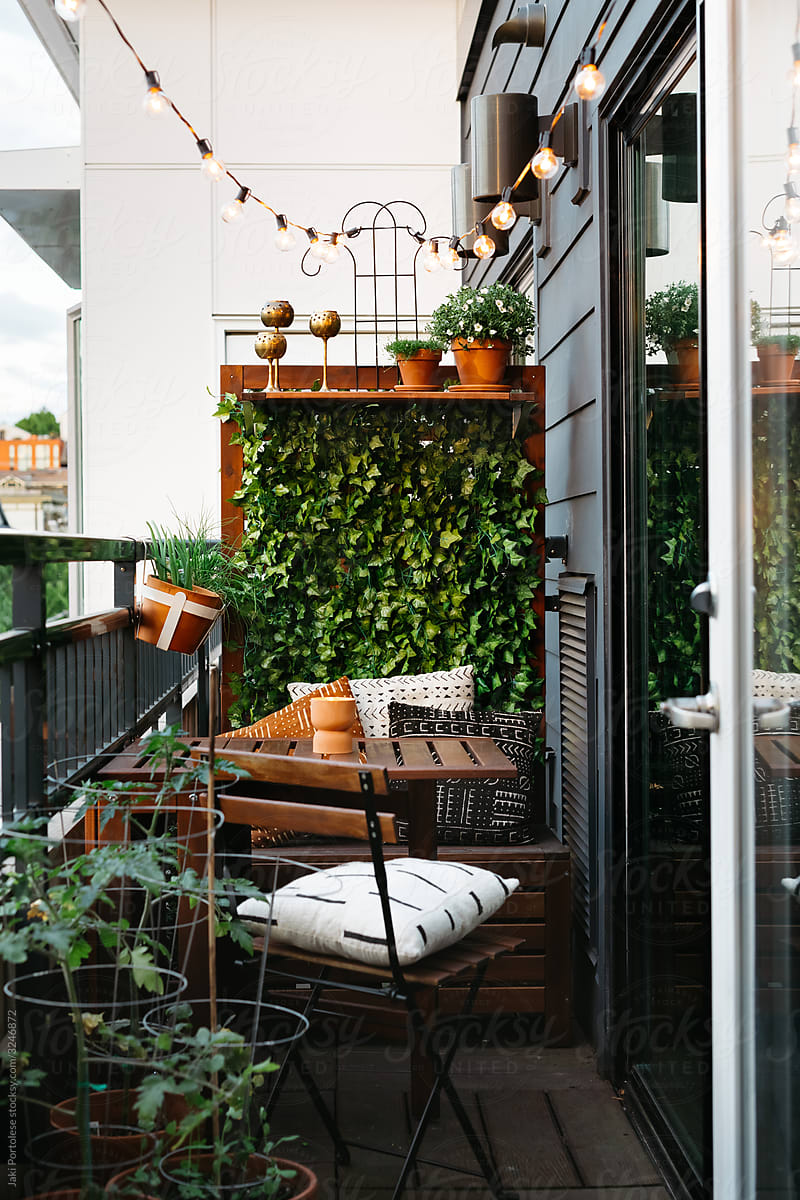Everything You Need to Know to Turn Your Outdoor Space Into Your Office
In preparation for the second it’s about 50 degrees.
Updated Oct 11, 2018 11:56 PM
We may earn revenue from the products available on this page and participate in affiliate programs.
With working from home as the new normal, makeshift offices are going for a premium. We’ve created temporary walls with scalloped folding screens; turned under-stairs spaces into deep-concentration nooks; and let a desk spruce up an unused wall.
While outdoor spaces are often considered spots for entertaining, let’s be honest: They’re also pretty good for catching up on emails. And if you’re lucky enough to have a patio, balcony, terrace, or backyard, you know they’re way underutilized. Instead of bringing the outdoors in, take the indoors out and transform the area into a multifunctional co-working and co-learning locale for the entire family.
Beyond design, the most crucial element to nail down is, of course, the technology. Because there’s no point in having a solid outdoor work setup if your Internet connection keeps going in and out. Here is everything you need to know.
Test It Out
“Mobility is becoming baked into our technology,” says Kendall Hartley, an educational technology professor at the University of Nevada, Las Vegas. “There may be spaces in your backyard that actually have better connectivity than some rooms in your house. It all depends on the distance from the wireless router.” If your router is in the back of your living space, for example, your patio will likely have a great connection. (If you’re not sure, Verizon Fios’s connection speed test lets you check different areas.)
With Verizon Fios Self-Organizing Network technology, your devices will connect to the strongest signal available without a manual setting. If the Wi-Fi signal isn’t strong enough where you’d like to work, a Fios Extender will expand the distance and flexibility of your network to those hard-to-reach places.
Experiment With Alternatives
In many places, you can now get a wireless connection that originates outside the home—some phones and carriers offer tethering functions, which turn your phone into a WiFi hot spot, while certain community locations and businesses offer free WiFi to customers. You can also buy a portable router or use a hot spot database likeNetSpot or WiFi Map.
“The connection speed will be less than from your home WiFi, but it’s generally serviceable for most activities,” says Hartley. Just be sure to read any warnings carefully for any monetary or security concerns.
Put Function First
“With space usually limited on a balcony, I suggest adding two comfortable lounge chairs with a small table in between,” says Lauren Reyes Lim, the founder and owner of LVR Studios, a California-based design firm.
Practical furniture plus a few finishing touches can add personality. “Ground the area with a small outdoor rug, and surround yourself with tall potted plants on the corners,” says Lim. “Keep outdoor lanterns or hurricanes of various sizes, usually large to small, around your seating group to enjoy the ambience as day turns to night.”
On the Shady Side
With a whole patio or yard to carve up for an outdoor WFH spot, it’s key to find somewhere full of cool shade, especially during the warmer months. Trees, of course, can offer this, as will durable umbrellas.
“Purchase an outdoor-grade—teak is my favorite—dining table that could double as a long worktable for you and your family,” suggests Lim. “It even works as a conference table to hold outdoor meetings. Pair it with comfortable and upholstered outdoor-grade seating, with a rug to properly zone out this space, and you’ll have a dedicated area for work—and dining when the occasion calls.”

